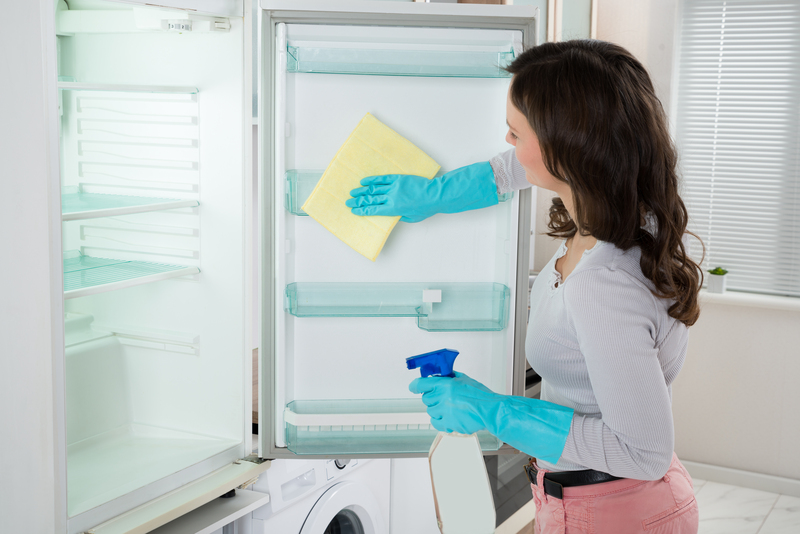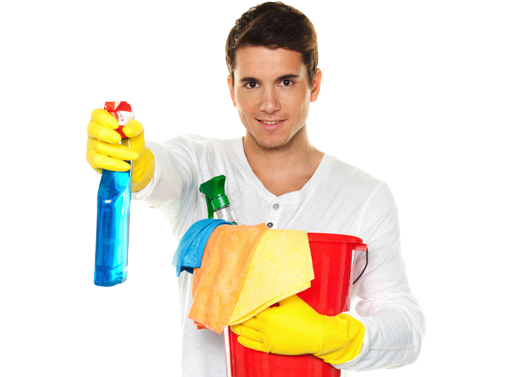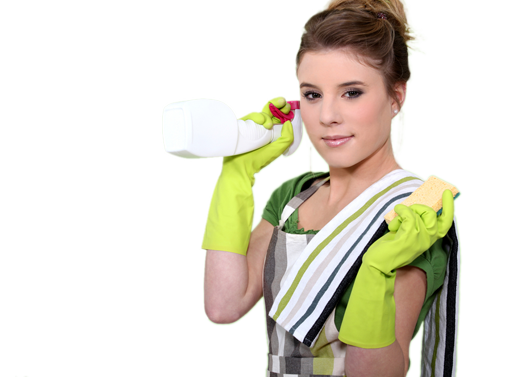Transform Your Stovetop Surface: Bid Farewell to Burnt Stains
Posted on 22/06/2025
Transform Your Stovetop Surface: Bid Farewell to Burnt Stains
The stovetop is the heart of every kitchen, witnessing countless meals, late-night snacks, and treasured family recipes. But with all that usage comes the inevitable: stubborn, burnt-on stains. If you've grown tired of scrubbing, scouring, and still seeing those unsightly marks, you're not alone. In this comprehensive guide, you'll discover expert tips on how to restore your stovetop to its original shine and eliminate burnt stains for good.

Understanding Burnt Stains on Your Stovetop Surface
Before learning how to tackle stubborn stovetop stains, it's essential to understand what causes them. Burnt stains result from food spills, acidic sauces, or sugary liquids that get heated repeatedly, forming a tough, blackened residue. Over time, improper cleaning methods or lack of maintenance can allow these stains to bake in, making them even more difficult to remove.
- Ceramic Stovetops: Susceptible to scratches and chemical damage. Burnt-on food sticks easily.
- Glass Stovetops: Show every mark and are prone to cloudiness if not cleaned quickly.
- Gas Stoves with Grates: Have tough-to-clean areas and nooks where grease and burnt debris accumulate.
- Electric Coil Stoves: Spillage can cause under-coil buildup, potentially affecting performance.
Common Mistakes to Avoid
- Using abrasive scrubbers that scratch or dull the surface
- Allowing spills to sit and harden
- Neglecting regular cleaning routines
- Applying strong chemicals that may damage the stovetop finish
Why It's Important to Keep Your Stovetop Spotless
Maintaining a spotless stovetop surface is about more than appearances. Here's why:
- Prevents permanent staining: Prompt action halts etching and darkening.
- Enhances kitchen hygiene: Burnt food serves as a magnet for bacteria and unpleasant odors.
- Improves energy efficiency: Clean burners and surfaces ensure optimal heating and cooking performance.
- Prolongs appliance life: Regular care prevents buildup that can cause costly damage.
Preparing to Clean: What You'll Need
Gather your supplies before starting your stovetop transformation. The right tools can make the job safer and more effective. Here's a list to consider:
- Baking soda (acts as a gentle abrasive)
- White vinegar or lemon juice (natural degreasers)
- Dish soap (for cutting through grease)
- Soft microfiber cloths and non-abrasive sponges
- A plastic scraper or razor blade (for glass/ceramic surfaces only)
- Gloves (if you're handling strong cleaners or have sensitive skin)
- Clean, dry towels
Optional Tools
- Commercial stovetop cleaners (read labels for compatibility)
- Old toothbrush (for hard-to-reach spots)
- Olive oil or specialized stovetop polish for finishing
Step-by-Step: How to Bid Farewell to Burnt Stains on Stovetops
Step 1: Safety First
Always unplug or turn off burners and allow the surface to cool completely before starting. If you have a gas stove, ensure the gas valve is off for added safety.
Step 2: Remove Loose Debris
Wipe the surface gently with a dry microfiber cloth to clear crumbs, loose food, and dust. For gas stovetops, take off the burner grates and set them aside for individual cleaning.
Step 3: Make a Cleaning Paste
Mix baking soda with a bit of water or vinegar to form a thick paste. This versatile cleaner breaks down burnt food without scratching sensitive surfaces.
Step 4: Apply and Let Sit
Spread the paste over the burnt stains. Let it sit for at least 15-20 minutes. The longer it sits, the better it will soften the stubborn residue.
Step 5: Gently Scrub
Using a non-abrasive sponge or cloth, wipe away the paste in gentle, circular motions. Avoid pressing too hard, especially on glass or ceramic stovetops. For extremely tough spots, use a plastic scraper at a low angle.
Step 6: Rinse and Wipe Clean
Dampen a fresh microfiber cloth with warm water. Wipe down the surface thoroughly to remove all traces of baking soda and dissolved grime.
Step 7: Spot Treatment for Stubborn Stains
If any burnt residue remains, apply a bit of vinegar directly to the spot, let it fizz, then wipe or gently scrape. Repeat the process as needed--patience is key.
Step 8: Final Buff and Shine
Dry the stovetop with a clean, dry towel. To achieve a streak-free, glossy finish, lightly buff the surface with a soft cloth, optionally using a drop of olive oil or stovetop polish.
Specialized Tips: Cleaning Different Types of Stovetops
1. Glass and Ceramic Stovetops
- Use only soft cloths or sponges--no steel wool or hard-bristled brushes.
- Commercial glass cooktop cleaners offer excellent results. Follow instructions closely.
- Use a razor blade scraper at a shallow angle for stuck-on residue, keeping the surface wet to avoid scratches.
2. Gas Burner Stoves
- Remove grates and burner caps; soak them in hot, soapy water for 20+ minutes.
- Use a toothbrush and baking soda paste to scrub all parts, then rinse and dry completely.
- For clog-free burners, use a paper clip or toothpick to gently clear any debris.
3. Electric Coil Stoves
- Remove coils if your model allows; wipe them with a damp cloth (never submerge electrical components).
- Use a paste or gentle degreaser on the drip pans; soak and scrub thoroughly.
Natural Solutions for a Gleaming Stovetop Surface
If you prefer chemical-free cleaning or have allergies, try these eco-friendly hacks:
- Lemon juice and baking soda: The acidic juice breaks down grease, while baking soda lifts burnt-on food.
- Vinegar spray: Mix equal parts white vinegar and water in a spray bottle. Spritz, let sit, and wipe away grime.
- Salt paste: Salt absorbs oils and acts as a mild abrasive--excellent for metallic cooking grates.
Avoid These Harmful Ingredients
- Ammonia (can damage some finishes and irritate lungs)
- Bleach (potentially discoloring and corrosive)
- Abrasive powders (scratch sensitive surfaces)
Prevention: Keep Your Stovetop Sparkling for Good
With the right maintenance routine, you can say goodbye to burnt stains on your stovetop surface for the long haul. Here's how to keep it pristine every day:
- Wipe spills immediately before they harden and burn.
- Establish a weekly deep-clean schedule, focusing on hard-to-reach spots.
- Use burner liners (where compatible) to catch drips and spills.
- Regularly check and clean under burners and in grates to prevent buildup.
- Polish the stovetop monthly with a micro-abrasive cleaner for ultimate shine.
Stovetop Transformation: When To Call a Professional
While DIY stovetop cleaning is effective for most stains, there are situations when professional help is warranted. Contact a technician or appliance specialist if:
- You notice cracks, chips, or deep discoloration that doesn't respond to cleaning.
- There are electrical or gas flow issues.
- Household remedies have not worked and the surface integrity seems affected.
Extra Tips for a Gorgeous Kitchen
Maintaining a sparkling stovetop uplifts the entire kitchen. For an all-around transformation, consider:
- Upgrading your baking sheet and pan organization to minimize spills.
- Installing a splash guard behind the stove to protect walls.
- Using splatter screens and covers while cooking to lessen the mess.
- Keeping microfiber cloths handy for quick, daily wipes after each meal.

Frequently Asked Questions (FAQ)
Does baking soda remove burnt stains from any stovetop?
Baking soda is safe for most surfaces except aluminum or fragile enamel. Always perform a spot test first to ensure compatibility.
Can I use a razor blade scraper on my ceramic stovetop?
Yes, but only for ceramic and glass surfaces, and always with care. Keep the angle shallow and the surface moist to prevent scratches.
How often should I deep-clean my stovetop?
Ideally, give your stovetop a thorough cleaning at least once a week, depending on usage. Spot-clean after every cooking session.
Are commercial stovetop cleaners better than home remedies?
Some commercial cleaners can be more convenient or targeted, but natural solutions like baking soda and vinegar are just as effective, cost-efficient, and gentler on most finishes.
Conclusion: Your Stovetop Transformation Awaits
A spotless, burn-free stovetop surface doesn't have to be just a dream. With the right cleaning strategies and preventive care, you can say farewell to stubborn burnt stains and enjoy a kitchen you're truly proud of. Whether your cooktop is glass, ceramic, gas, or electric, stick to these proven methods for impressive results--without damaging your appliance.
Start today and transform your stovetop surface for a cleaner, safer, and more inviting kitchen--your future self (and your guests) will thank you!



